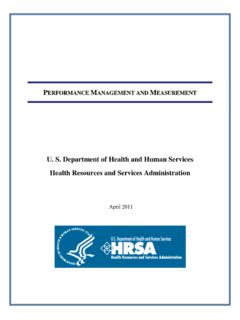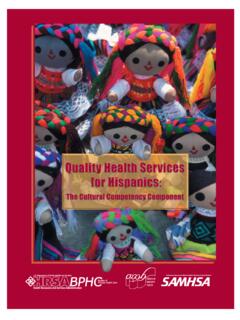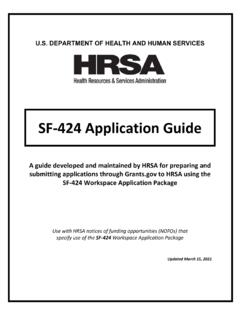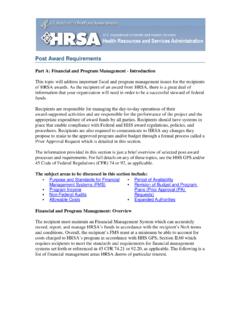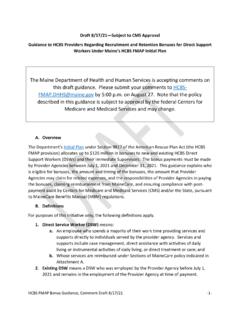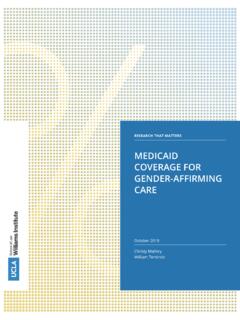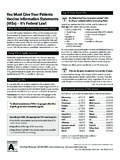Transcription of Starting a Rural Health Clinic - A How-To Manual
1 Starting a Rural Health Clinic - A How-To Manual This publication was funded by the Health Resources and Services Administration's Office of Rural Health Policy with the National Association of Rural Health Clinics under Contract Number 00-0245. (P). Preface We are pleased to share with you this Manual on how to start a Rural Health Clinic (RHC). This document is being produced in response to the hundreds of requests for information we have received about the RHC program over the years. The Rural Health Clinic program presents a very real opportunity for enhancing access to Health care in underserved Rural areas. The following information will provide you with a description of the program requirements, and describe in easily understandable language the mechanism for becoming an RHC.
2 The Federal Office of Rural Health Policy has prepared this document to assist Health care practitioners to better understand the process for becoming a Federally-certified Rural Health Clinic . We hope it will be useful. Elizabeth M. Duke, Administrator Health Resources and Services Administration Table of Contents Introduction Chapter One - Overview of the RHC Program Chapter Two - Getting Started - Does Your Site Qualify? Chapter Three - Feasibility Analysis - Is The RHC Program For You? Chapter Four - How to File the RHC Application Chapter Five - Preparing for the RHC Certification Inspection Chapter Six - Completing the Cost Report Chapter Seven - RHC Coding and Billing Issues Appendix A - State Survey and Certification Agencies Appendix B - State Offices of Rural Health Appendix C - Criteria for Designation as a HPSA or MUA.
3 Appendix D - Sample Policy and Procedures Manual Appendix E - Other Resources Introduction In 1977, Congress passed the Rural Health Clinic Services Act (PL 95-210). The legislation had two main goals: improve access to primary Health care in Rural , underserved communities; and promote a collaborative model of Health care delivery using physicians, nurse practitioners and physician assistants. In subsequent legislation, Congress added nurse midwives to the core set of primary care professionals and included mental Health services provided by psychologists and clinical social workers as part of the Rural Health Clinic (RHC) benefit.
4 The law authorizes special Medicare and Medicaid payment mechanisms for Rural Health clinics and uses these special payment mechanisms as the principal incentive for becoming a Federally-certified Improving access to primary care services in Rural Health Clinic . For Medicare, underserved Rural communities and utilizing a team the payment mechanism is a modified approach to Health care delivery are still the main focuses of the RHC program. cost-based method of payment. For Medicaid, States are mandated to reimburse Rural Health Clinics using a Prospective Payment System (PPS). Federal law allows States to use an alternative payment method for Medicaid services, as long as the payment amounts are no less than the Clinic would have received under the PPS method.
5 As will be detailed later in this guide, a RHC may be a public or private, for-profit or not- for-profit entity. There are two types of RHCs: provider-based and independent. Provider- based clinics are those clinics owned and operated as an integral part of a hospital, nursing home or home Health agency. Independent RHCs are those facilities owned by an entity other than a provider or a Clinic owned by a provider that fails to meet the integral part criteria. The mission of the RHC program has remained remarkably consistent during the lifetime of this unique benefit. Improving access to primary care services in underserved Rural communities and utilizing a team approach to Health care delivery are still the main focuses of the RHC program.
6 The information found in this book is geared toward those individuals and organizations that share that mission. There are over 3,000 Federally-certified RHC located throughout the United States. The RHC community is almost evenly split between independent clinics (52 percent) and provider-based clinics (48 percent). According to a national RHC survey conducted by the University of Southern maine (USM), independent clinics are most commonly owned by physicians (49 percent) and provider-based clinics are most commonly owned by hospitals (51 percent). Approximately 43 percent of RHCs are located in Health Professional Shortage Areas and 40 percent are located in Medically Underserved Areas.
7 I Also according to the University of Southern maine , 69 percent of all RHCs are located in ZIP codes classified by the department of Agriculture as small towns or isolated areas. A. small town or isolated area is a community with fewer than 2,500 people. Another 17. percent of clinics are located in so-called large towns . These are communities with populations between 10,000 and 49,999. The majority of the remaining clinics are located in areas defined as suburban. Each of these clinics was located in a Federally-designated or -recognized underserved area at the time the Clinic was certified. In addition, all of these facilities are located in non-urbanized areas as defined by the Bureau of the Census.
8 Despite the tremendous growth we have seen in the RHC program over the past decade and the considerable contribution RHCs are making towards alleviating or eliminating access to care problems, thousands of Rural communities continue to receive the underserved designation. Rural communities have historically had difficulty attracting and retaining Health professionals. For some Rural communities, the inability to access the Health care delivery system may be because there are no Health care providers in the area. The lack of Health professionals may be due to the fact that Rural communities are disproportionately dependent on Medicare and Medicaid as the principle payers for Health services.
9 In the typical Rural Health Clinic , Medicare and Medicaid payments account for close to 60. percent of practice revenue. Consequently, ensuring adequate Medicare and Medicaid payments is essential to the availability of Health care in Rural underserved areas. There was tremendous growth in the RHC program through the early 90s. Between 1990. and 1997, nearly 3,000 clinics received initial certification as a Rural Health Clinic . Since 1997, hundreds of new clinics have been certified to participate in the program, however, many clinics approved in the early 90s have chosen to discontinue participation in the program. Consequently, we have seen a slight drop in the aggregate number of clinics.
10 The year 1997 is considered a threshold year for the RHC community because it was this year that Congress enacted legislation to better target growth in the RHC program. While the growth in the RHC program during the early and mid-90s was not unexpected, there were some in Congress that felt that some of the clinics certified as RHCs during this period were not really appropriate for participation in a program aimed at improving Health care in underserved areas. For example, it was discovered that the Medically Underserved Area list used for participation in the RHC program had not been updated by the Federal government since the early 1980's.
